"...more is always said then the real truth"
- Caterina Sforza
On August 1483, the 21 year old Caterina Sforza rode up to the Castel Sant’ Angelo as shouts of “Duca! Duca!” cut through the stifling heat. Clad in a green satin dress with two yards of fabric flowing behind her, a long black cape, and a curved falchion (sword) in her clenched fist, she looked like an avenging angel sent from the underworld. The people of Rome pushed and clamored to get a glimpse of the golden-haired warrior princess who had held the city of Rome for thirteen days against her enemies’ opposition. Weeks earlier, Pope Sixtus IV had died and the Eternal City had erupted into chaos with mob riots and warring families trying to cut each others throats. Her husband, Girolamo Riaro, had met the turmoil by hightailing it out of Rome, but Caterina had bravely ordered the garrison to defend the city and galloped out on horseback in the midst of melee.
To the people of Rome, she was the vision of strength, courage and Sforza determination. She was also 7 months pregnant.
 Caterina Sforza was born in 1462 as the illegitimate daughter of Galeazzo Maria Sforza and Lucrezia Landriani. She was given a humanist education along with learning hunting and the martial arts skills which would become so feared that one contemporary wrote, “when she had a weapon in her hand, she was hard and cruel.” (1) She most likely learned brutality from her father who once executed a poacher by having him swallow an entire hare including fur. With another, he had him nailed to his coffin....alive. One of his favorite past times was to visit the local convents at night and rape the nuns. Over time, Galeazzo's actions tended to garner him a few too many enemies in high places and in 1474, he was assassinated by the Visconti.
Caterina Sforza was born in 1462 as the illegitimate daughter of Galeazzo Maria Sforza and Lucrezia Landriani. She was given a humanist education along with learning hunting and the martial arts skills which would become so feared that one contemporary wrote, “when she had a weapon in her hand, she was hard and cruel.” (1) She most likely learned brutality from her father who once executed a poacher by having him swallow an entire hare including fur. With another, he had him nailed to his coffin....alive. One of his favorite past times was to visit the local convents at night and rape the nuns. Over time, Galeazzo's actions tended to garner him a few too many enemies in high places and in 1474, he was assassinated by the Visconti.Three years later, Caterina married Girolamo Riaro, nephew (wink wink) of Pope Sixtus.* As long as Sixtus was in power, Caterina and Girolamo were treated like the Hollywood golden couple. Girolamo was elevated to the Lordship of Forli while he lived amongst the decadence of Rome. Meanwhile, Sixtus was in the process of remaking Rome as the envy of the world. Work had just begun on the Sistine Chapel (named after Sixtus) along with several other construction projects of new churches, bridges and streets. Art flourished. The Vatican Library was founded. Rome had become the place to be. It was also a cesspit of corruption with a few strong families tenuously holding on to power through nepotism and simony. (The term nepotism comes from the Medieval Italian word for nephew- nepote.)
Then Sixtus died in 1484. The glory days for Caterina were over. Pope Innocent VIII was elected and as a token bone for getting kicked out of Rome, he let Caterina and Girolamo keep Forli to rule. The denizen of Forli didn't exactly appreciate the gesture. After enduring months of tax increases, the opposing Orsi family threw Girolamo out a window. They then took Caterina’s six children as hostage.
Yet Caterina appeared unfazed by the hostage situation. When the Orsi threatened to hack her children to pieces if she did not surrender the strategic fortress of Rocca di Ravlaldino, Caterina simply lifted up her skirts and told her enemies to keep them because she had the “mold” to make more. This skirt lifting incidence is retold by many biographers including Machiavelli who wrote in his Discourses:
“She reproached them from the wall with the death of her husband, threatening them with every kind of revenge. And to show that she did not care about her children, she uncovered to them her gen- ital members, saying that she still had means for producing more children.” (2)
First hand accounts tend to be less colorful then Machiavelli’s version of events. According to Leone Cobelli who was actually present during the siege, Caterina, simply made “four figs” at her captives. (The four figs was a not-so-nice gesture made by placing the thumb between the index finger and middle finger while making a fist - your Renaissance equivalent of giving someone the finger.) Cobelli fails to mention Caterina lifting her skirts or telling her captives to keep her children.
Other accounts describe Caterina as claiming she was pregnant and that her unborn son would avenge her enemies. (A threat to be taken seriously in Renaissance Italy) One thing is certain. Caterina certainly didn’t fall into weeping histrionics at the sight of her children taken hostage. Was her seemingly apathetic stance a clever bluff or the actions of a heartless mother?
Whichever it was, it worked. With the help of Uncle Ludovico Sforza (il moro) she regained control of Forli and spent the next few years as regent for her young son, Ottaviano. During this time, she brushed up on her alchemy skills, wrote a book of beauty recipes and best of all, devised ways to avenge her husband’s death. She got really creative with the patriarch of the Orsi family, Andrea Orsi. She and had him dragged through the streets tied to a horse’s tail and then ordered his heart cut out and his body dismembered.
Those were fun times for Caterina. When the Borgia Pope Alexander VI took charge, everything went to hell in a handbasket. Citing Caterina's salacious conduct in taking lovers, he ordered that Forli be given to his son, Francescolotto Gibo. (This punishment seems kind of harsh when you consider that Francescolotto was no choir boy.) Then in 1498, Alexander’s son Cesare Borgia struck a deal with king Louis XII where Louis promised to drive out the ruling families of Romagna in exchange for claims to Milan and Naples.
Declaring that 'should I have to perish, I want to perish like a man,' Caterina defended Ravaldino fortress from Caesar and his thugs by using one of oldest Borgia tricks in the book...poison. (3) She sent Alexander some chatty letters that she sealed with a kiss and rubbed on some local plague victims. Unfortunately, her terrorist attack on the Pope failed when spies revealed the plot to Alexander. Cesare promptly had Caterina imprisoned where she was mostly likely raped and tortured. Caterina was release in 1501 and died 7 years later of pneumonia.
Caterina Sforza: The Artist Muse
She is immortalized by countless artists including Botticelli in his The Three Graces (Caterina is believed to be the grace in the far right) and also several portrayals of the Virgin and Child. Leonardo was believed to have met her around 1500 and she may have been his model for the Mona Lisa. (There are some slight similarities seen in the paintings below, but most art scholars still credit the sitter's identity to Lisa Gherardini Giocondo. Personally, I don't see the similarities.) Caterina was also good friends with Michelangelo and she became one of the few people he trusted.
Caterina Sforza: The Mother
Despite being called a “Virago”, “The Tiger of Forlì” and “Daughter of Perdition” by Pope Alexander VI, Caterina sure was fertile. She had 11 children, popping them out practically every reproductive year of her life. But Caterina is not exactly your Hallmark card mother. While she undeniably had tremendous political acumen, history has also branded her as the uncaring shrew who in a moment of passion, labeled her womb as the artillery in her quest for revenge. I had wanted to include Caterina Sforza in my book The Raucous Royals, but I had to cut her when I realized there was just no way to tackle her skirt lifting rumor delicately enough for a younger audience. Today, Caterina Sforza is reduced to a buxom action figure in the video game, Assassins Creed with a proclivity for more skirt lifting. It hardly does her any justice. At least in the game she tries to win back her children.
Happy Mother's Day to all my mom readers. And remember if your kids don't worship the ground you walk on today then take a Machiavellian stance and just threaten to whip up another batch.
Notes:
* Girolamo was most likely Sixtus's son. "Nephew" became a euphemism for son in the 15th century.
(1) Jones, page 181
(2) Machiavelli, Discourses 3.6, CWO: 444
(3) Fraser p. 201
Sources and Further Reading:
Jones, David E. Women warriors: a history, Potomac Books, 2002.
Fraser, Antonia. Warrior Queens, The Legends and the Lives of the Women Who Have Led Their Nations in War, Anchor, 1990.
Julia L. Hairston, Renaissance Quarterly, Vol. 53, No. 3 (Autumn, 2000), pp. 687-712. The University of Chicago Press on behalf of the Renaissance Society of America
Breisach, Ernst, Caterina Sforza: A Renaissance Virago, University of Chicago Press, 1968

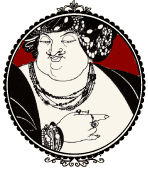

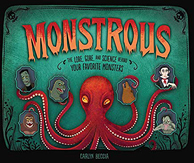
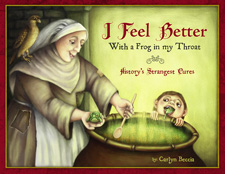
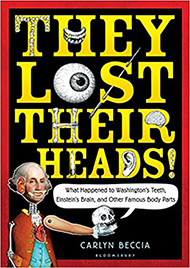


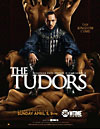

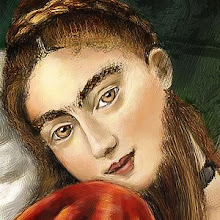







13 comments:
Well!
Whether all these stories about her are true or not, this lady made the likes of Queen Elizabeth I and Boadicea look like Little Bo Peep, didn't she?
I know--as a mom--I should be shocked and horrified that Caterina called everyone's bluff re: her children's hostage status, but I have to say, "Nicely done!" How many men through time auctioned their daughters off to the highest bidder or had their sons "taken care of"? Why should historical women be any different?
Excellent post - thank you!
Thank you for sharing this! I enjoyed reading it and look forward to future posts. :)
I loved it! When I read the "skirt-lifting" comment, it reminded me of what John Marshall said to Stephen I of England when he threatened to hang his son, Will - "I have the hammer to forge more and better sons".
Great post - I actually just finished reading about her and other militant ladies in Antonia Fraser's "Warrior Queens" and found her to be fascinating! She and John Marshal would have gotten along just perfectly - too bad there were a few generations separating them.
What a great post! Thanks for sharing.
Wow, and I thought the Borgias were bad...
Just wanted to say how much I enjoy your blog/website. It's brilliant!
She obviously would have made a great poker player!
I had never heard of her till I read this blog,, and it intrigued me so much I had to do a web search on her.
I am surprised no one has done a romance book about her. It would be a great story!
So was her mother as tough as she was?
Undine - yes, she is quite a character. I think she is going to be featured in that new miniseries about the Borgia. I wonder who will play her?
Amy- ya, if a man did what she did then he would be called brilliant but Caterina gets the other B word.
Andrea Joki and Lauren - thanks.
Brooke - I had never heard that one. But you always amaze me in the amounts of history trivia you know. If we were to ever play Trivial Pursuit then I would need you on my team for that yellow square :)
Elizabeth - LOVE Fraser's book on Warrior Queens. It is so inciteful and is one of those books that I have read and reread.
Jean-Francois- thanks!
chasingbawa - Yes, I need to do a post soon on all the great "poisoners" in history. The Borgias would be right up there but there are a many more femme fatales.
Mindy - There is a new nonfiction book on her by Joyce de Vries but it is 125.00 and my interlibary loan system doesn't have it yet. If anyone gets their hands on a copy, I would love to hear what they think. But yes, she would make a GREAT fiction. You don't even have to make much up.
It's nice to read about women standing up or being brave during the time when society tend to be a sexist
Hey there! I guess there are 2 Brooke's on here...I didn't know that about Stephen I of England! As you can see, she's my heroine...I'm so not ashamed to say it (I don't implicitly believe the skirt-lifting part, it was noted by Machiavelli sometime after he was outwitted by her during another diplomatic mission)She was exceptionally shrewd and it was a brilliant move to "risk" her children - some scholars think her captors knew what was waiting for them in the form of Ludovico il Moro's advancing troops under Galeazzo di Sanseverino). Just as another poster noted, her actions are seen in an historical context. She was remarkable and deserves to be remembered for her personification of the highest honor that a Renaissance woman can achieve - to be ranked "as a man" in the matters heart and courage. Thank you for the wonderful treatment of this interesting Raucous Royal.
She was one "bad" mother!
PS: thanks for the trivia compliment, even though it goes to the other Brooke! Have a great day!
- Brooke da Imola (I think I was one of those poor washing women whose jaw dropped when she blazed into town...but the sight of her made my heart sing!
Thanks! I am a repository of useless information!:) By the way, read about Will Marshal - the boy it occurred to. Of course, Stephen didn't hang him, and he went on to become known at the world's greatest knight. They called him "The Marshal". His name is where the title of Earl Marshal of England originated. He served Henry II, his son Henry the Younger King, Richard I, John, and served as regent during Henry III's minority. He was the only person to unhorse Richard II (during his war with his father), and reportedly left him laying there after killing his horse - just because he could. Of course, after Henry II's death, Richard didn't punish him, he promoted him!
Post a Comment